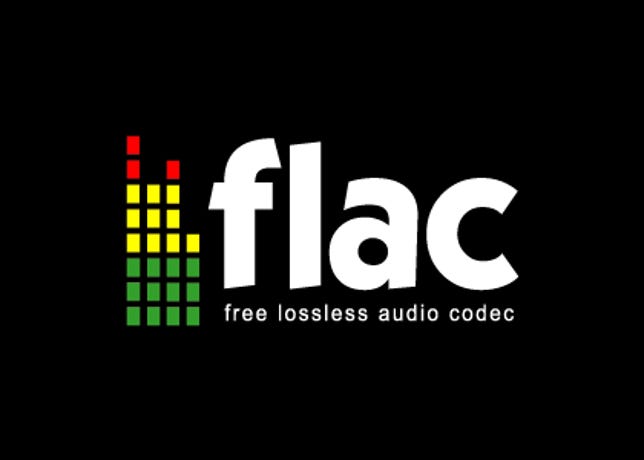 FLAC is an open-source file format which offers true-CD quality rips at half the sizeXiph.org Foundation
FLAC is an open-source file format which offers true-CD quality rips at half the sizeXiph.org FoundationIn the late 1990s, one of the original portable music file formats -- the MP3 -- was causing quite a bit of bother mainly due to user's illegal sharing over Napster. While MP3 eventually prevailed, there is an even better choice for high-quality music downloads, and it's playable on your favorite device. It's even in your music streams.
FLAC (Free Lossless Audio Codec) is a musical file format that offers bit-perfect copies of CDs but at half the size. It is compatible with many phones (including the iPhone -- with an app), portable music players (PMP) including the PonoPlayer and hi-fi components. FLAC files are available for roughly the same price as the equivalent MP3 in online stores and sound much better.
To see where FLAC has come from and where it is headed, you only need to look at the history of its "lossy" predecessor. Though MP3.com was one of the first sites to sell MP3s in 1999, dedicated players like the Rio PMP300 were subject to legal action by record companies. Yet when the iPod was released in 2001, it helped to legitimize the format, and today MP3s are now sold by most online music stores. (Disclosure: MP3.com no longer sells MP3s and is now owned by CBS Interactive, parent company of CNET.)
FLAC, ahh-ahhh, it'll save every one of us*
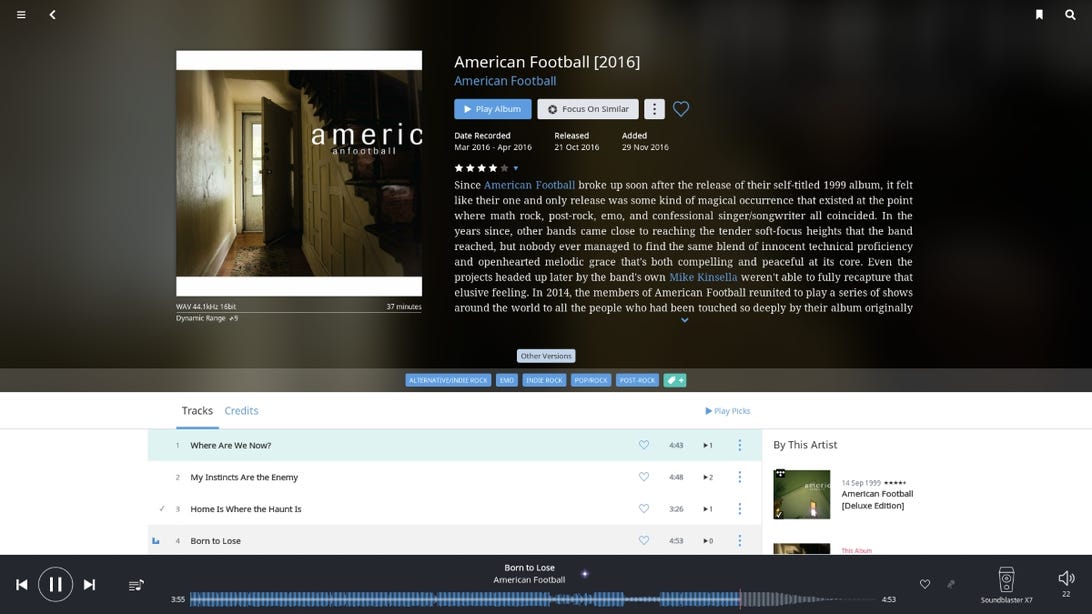
One of the best FLAC players available is Roon, a high-end music player for PC and Mac.Screenshot by Ty Pendlebury/CNET
Until recently, the music format FLAC (Free Lossless Audio Codec) enjoyed a similar "pirates-only" reputation to MP3 because of its lack of Digital Rights Management (DRM), but FLAC has the potential to reach a larger audience than just audiophiles and tech enthusiasts. Currently, almost every record label is on board with the format, and consumers can buy lossless music from both major and indie acts for the same price as the iTunes Store.
FLAC first emerged in 2001 as an open-source alternative to other lossless formats emerging at the time. These included Apple Lossless (ALAC), Microsoft's WAV (Waveform Audio Format) and WMA Lossless. But these competitive formats do have their disadvantages. While ALAC has a loyal following among iPod and iPhone users, it hasn't seen much uptake outside of Apple products. The WAV format is also popular, and it's compatible with iOS devices, but its biggest problems are that file sizes are very large, and it can't retain "tag" data -- artist, album name, lyrics, and so on -- in the way the other formats can. FLAC, on the other hand, not only supports tags but is also compatible with most music players. Apple is the only real holdout here, for while there was talk in 2017 of hardware support in both the iPhone 8 and X nothing has materialized. However, there are simple workarounds for iOS and Mac users.
*With apologies to Queen
What's the difference between MP3 and FLAC?
MP3 is a lossy format, which means parts of the music are shaved off to reduce the file size to a more compact level. It is supposed to use "psychoacoustics" to delete overlapping sounds, but it isn't always successful. Typically, cymbals, reverb and guitars are the sounds most affected by MP3 compression and can sound really distorted or "crunchy" when too much compression is applied.
Like MP3 before it, FLAC has been embraced by the music industry as a cost-effective way to distribute CD-or-better-quality music, and it doesn't have the auditory problems of MP3s. FLAC is lossless and more like a ZIP file -- it comes out sounding the same when it is unzipped. Previously the only way to get "lossless" files was via the uncompressed CD formats CDA or WAV, but neither is as space-efficient as FLAC.
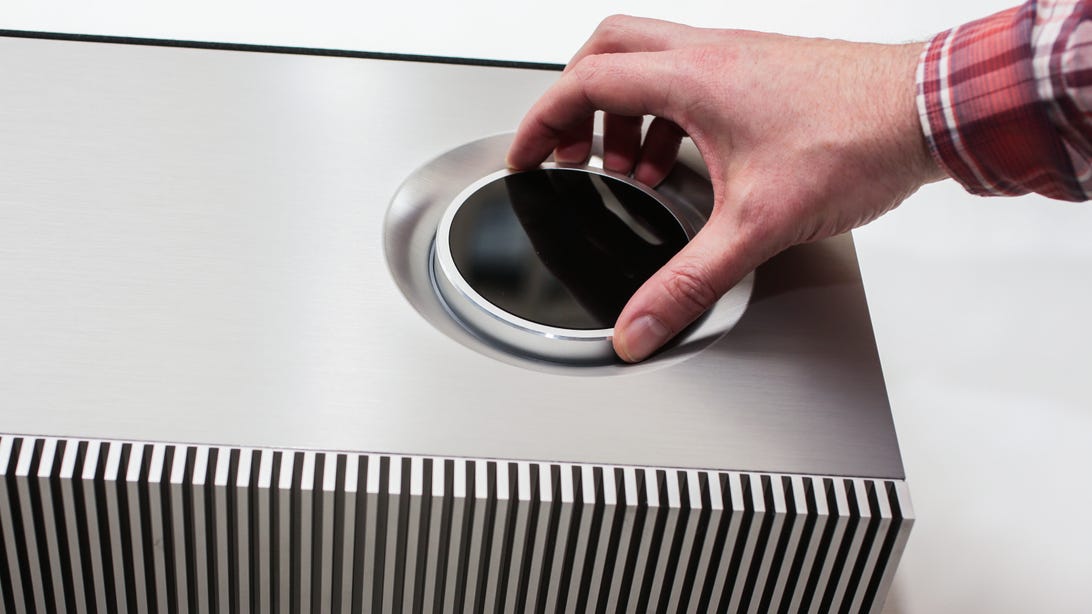
The Naim mu-so is a high-end wireless speaker that supports FLAC.
Sarah Tew/CNETWhile FLAC files are up to six times larger than an MP3, they are half the size of a CD, and can have the same boost in audio quality. Furthermore, FLAC is not just restricted to 16-bit (CD quality), and you can buy files up to 24-bit/192kHz for another potential boost in performance. While the effects of better-than-CD quality are highly debated, companies like Neil Young's Pono staked their reputations on its benefits.
But regardless of whether you are using 16- or 24-bit quality files, FLAC is here to stay. Experts such as Malcolm Hawksford, professor of psychoacoustics at Essex University, say that despite competition from proprietary formats like MQA and DSD the humble FLAC is still competitive.
"FLAC has a place in the future for high-quality audio. It is good for transporting files on the internet as it typically halves download time. It is unlikely that for lossless compression there will be significant improvements," Hawksford wrote on Bowers & Wilkins' Society of Sound blog.
While physical discs are still popular, their usefulness will eventually be eclipsed by the convenience of purely digital files: whether that means streaming or software files stored on your network or in the cloud. As a format FLAC will probably never be as popular a format as CD and DVD were in their heydays, but it's quickly become the format of choice for people who care about sound quality.
FLAC versus streaming
FLAC downloads have one major competitor: streaming. While audiophiles are mostly concerned with music bought from music stores like Bandcamp and HD Tracks, it's not the only option available to people interested in high quality music. At the lower end of the scale, Pandora and Rhapsody have been streaming for years at bit-rates between 128kbps and 192kbps but they're no match for lossless FLAC in the audio department.However there are several major streaming services that offer very high sound quality -- Spotify, Tidal and soon Qobuz -- and depending on the record, they can be indistinguishable from the CD. While Spotify content is ripped in 320Kbps Ogg Vorbis, it's Tidal that offers the biggest alternative to personal collections as it's also based on FLAC. The company is also able to offer hi-res music by adding Meridian's MQA technology for compatible devices. By contrast, Qobuz offers hi-res FLAC streaming without the use of a proprietary wrapper, but the trade-off is much larger file sizes not suitable for the train. In the meantime, both Spotify and Tidal let you download tracks for offline listening (with a paid subscription), and both catalogs are quite impressive.
But it's not just Tidal and Qobuz that offer lossless streaming: there are othe up-and-comers as well. While CD-ripping service Murfie was one of the first sites to offer true-quality streaming, it's currently only for customers who pay an additional $99 fee (roughly converting to £80 and AU$140), and only for the CDs they currently own. Meanwhile, Deezer Elite is another service that offers lossless streaming but currently only to users of Sonos.
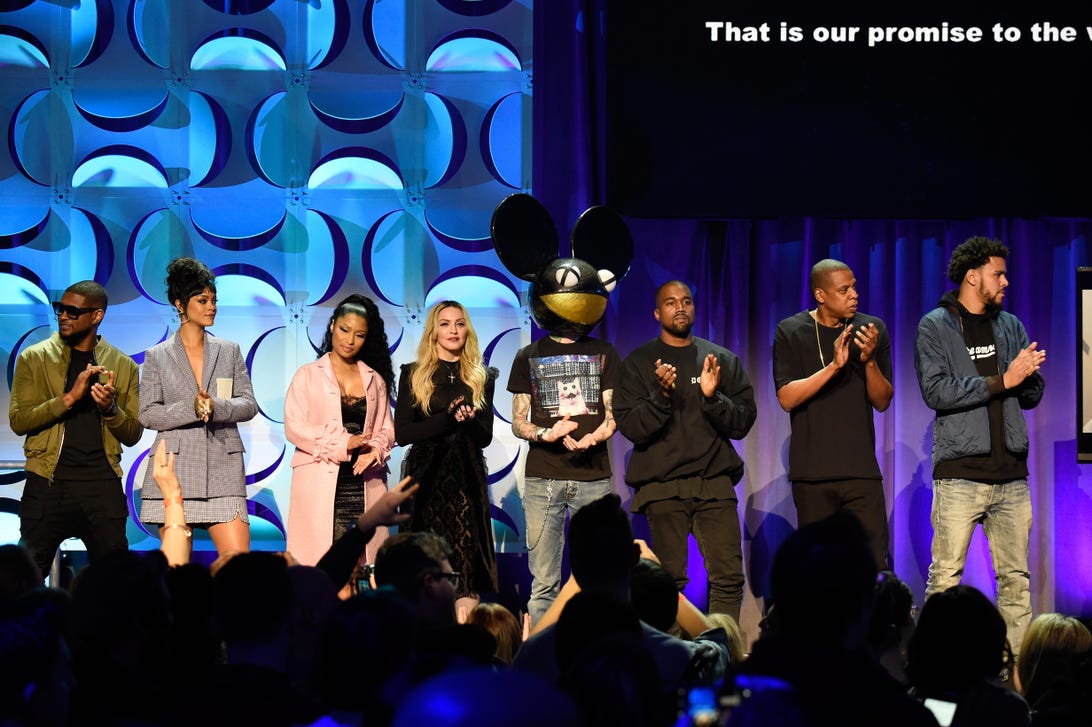
Stars including Rihanna, Nicki Minaj, Madonna, Deadmau5 and Kanye West called for a fairer deal at the launch of Jay Z's Tidal streaming service.
Kevin Mazur/GettySecondly, you don't need an internet connection to listen to your music, and while the Offline modes of both Tidal and Spotify enable you to use it on the subway, it still needs to be connected to the 'net at some point to get the files. What if your music player doesn't have apps or network capability? For inexpensive music players like the Sony A17, a set of FLAC files make the most sense.
Where can I get FLAC files?
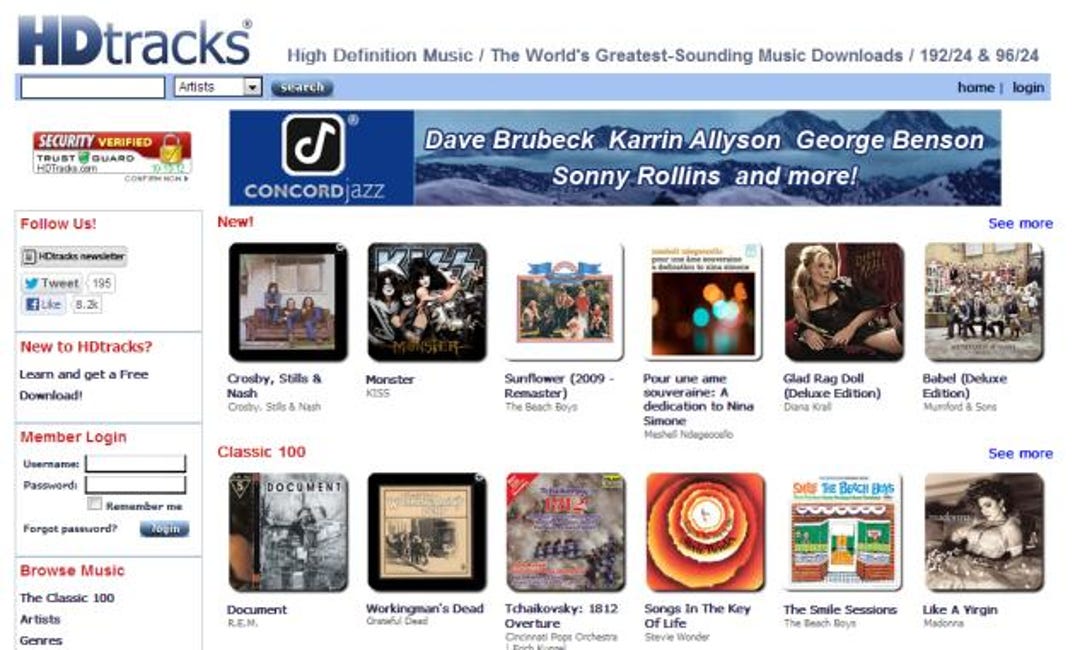
If you want to support the artist, there are several sites that let you purchase FLAC files.
HDTracks.comIf you'd rather pay someone else to do that for you, we cover our favorite sites for buying FLAC files here. If you want to find music and don't know which site the music is on, do a Google search for the name of the artist/album and "digital."
How do I play FLAC files?

FLAC Player is one of the many apps for iOS that enables FLAC playback.
FLAC PlayeriOS: There is still one hurdle preventing FLAC's full-scale adoption: the Apple iPhone and other iOS devices don't support within iTunes. With every major edition of iOS and iTunes, we secretly hope for FLAC support, but we may never get it. While Apple announced its Mastered for iTunes program (24-bit/44.1kHz) several years ago, the company has moved on to more profitable and immediate concerns such as Apple Music.
However, there are several apps available in the iTunes Store that do support the FLAC format and even let you stream them between devices on your network via AirPlay and DLNA. Apps available from the App Store include FLAC Player, MediaConnect and Capriccio.
Android: Users of Google's phone OS don't need to worry as much about FLAC support; from Android 3.1 (Honeycomb) onward the OS supports the file format natively. Even if you have an older Android phone, manufacturers like HTC and Samsung have added FLAC support to their software media players. Nonetheless, good apps to try from Google Play are Rocket Music Player, Player Pro -- which also supports high-res -- and Bubble UPnP (which includes DLNA support and also Tidal integration).
Windows and Mac: If you're a Windows 10 user, you can play FLAC files natively in the operating system. For older Windows versions, there is a Windows Media Player plug-in, but the players most recommended by audiophiles are Roon, Media Monkey and JRiver. Meanwhile Mac users can download Roon, Fluke for basic support for FLAC in iTunes or Songbird (also on PC).
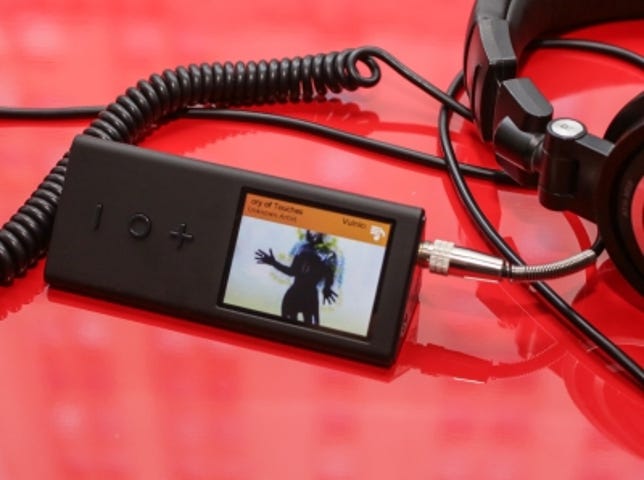
The PonoPlayer was one of the most high-profile FLAC devices but it was discontinued in 2017.
Sarah Tew/CNETPortable: While Android MP3 players have dwindled in popularity, they have been replaced by high-res portable players like Sony's Walkman NW-WM1 and the now-discontinued PonoPlayer designed to support FLAC natively, up to 24-bit/192kHz. Meanwhile, traditional players by Sony, iRiver and FiiO can typically play back FLAC.
Getting quality that's measurably better than your phone will cost you though, with models from Astell & Kern costing into the thousands. However, players such as the Sony A30 Walkman A Series promise 45 hours of battery life and start at about $220 (roughly £170 and AU$310). See CNET's best players that support FLAC here.
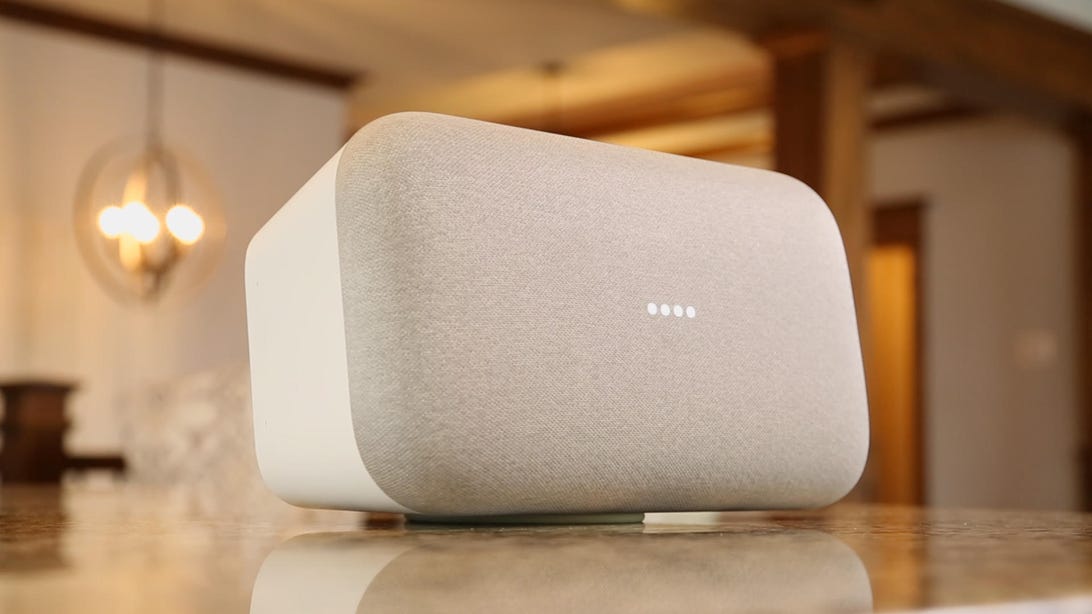
The Google Home Max supports both streaming and downloaded FLAC files via Chromecast.
CNETHi-fi: Of course, the biggest advantage to FLAC files is that they are ideally suited to listening on a hi-fi device. In the last few years, a wealth of streaming audio players have appeared with lossless FLAC playback one of their many benefits. The least expensive of these is the $35, £30 or AU$59 Chromecast Audio but these multiroom music systems also support the format.
If you own a Network Attached Storage (NAS) device, PC or even a phone you can serve FLAC files to any number of DLNA for media streamers--what does it all mean? in your AV system including TVs, Roku boxes, receivers and more. If the device connects to the internet, it's most likely to also support DLNA, and though FLAC isn't officially part of the DLNA specification, it usually comes along for the ride anyway.
Conclusion
Though streaming services may come and go, and even the long-term prospects of Spotify are not assured, a FLAC file is like a CD: once you buy it or rip it, it's yours forever (barring storage catastrophes). FLAC may never actually supplant MP3, but if you care about sound quality, then FLAC is undoubtedly your best option -- both now and into the foreseeable future.Editors' note, October 28, 2018: This article was originally published in October 2012 and has been updated with new information.
Source: https://www.cnet.com/news/what-is-flac-the-high-def-mp3-explained/